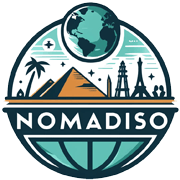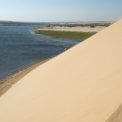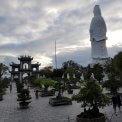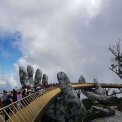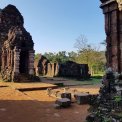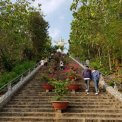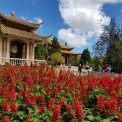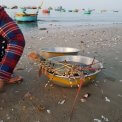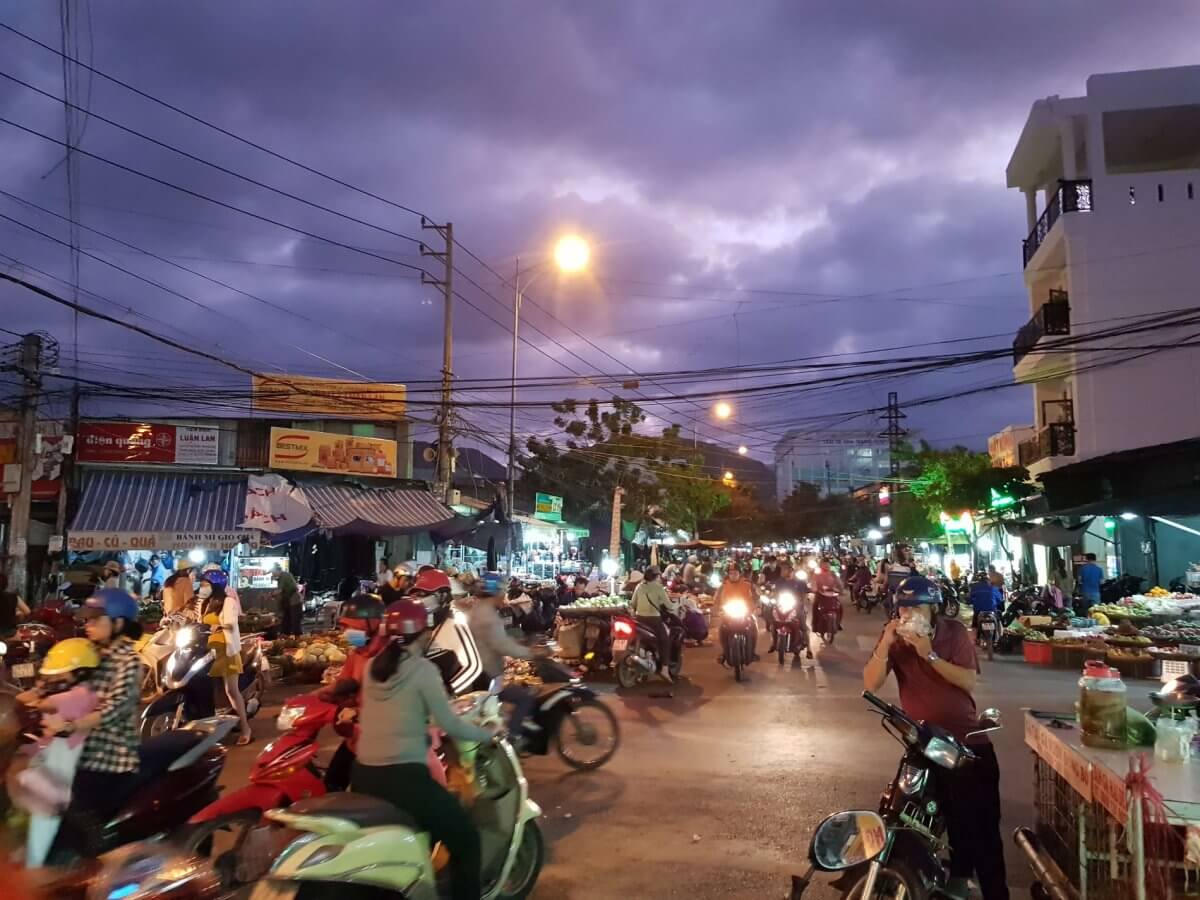We thank our friend Matúš.
A 2500-kilometer journey stretched across Southeast Asia might seem slightly less attractive to casual travelers than Thailand, Bali, or Japan (after all, if you’re going to trek to the other side of the planet, why not go to Vietnam?), but appearances can be deceiving. Vietnam is a cultural mindblow present at every turn, whether you’re navigating bustling Ho Chi Minh City or the Sa Pa jungle, every corner harbors specialties of its own kind. And not just on the plate!
Detailed Google map with attractions

Summary of costs per person
Total expenses per month (including flights, vaccinations, visas, etc.): 1622 euros
Route: Ho Chi Minh –> Vung Tau –> tx. La Gi –> Mũi Né –> Đà Lạt –> Nha Trang –> Hội An –> Đà Nẵng –> Hue and back.
By motorbike, boat, train, sleeper bus, airplane.
What you will learn
- Vietnamese culinary orgies, or why Vietnamese cuisine is a phenomenon
- Places to definitely visit
- Cool ideas for traveling
- Things to consider before your trip to Vietnam
- Forget all the “beware of scam” videos
- Documents, vaccinations, and visa business
Vietnamese culinary orgies
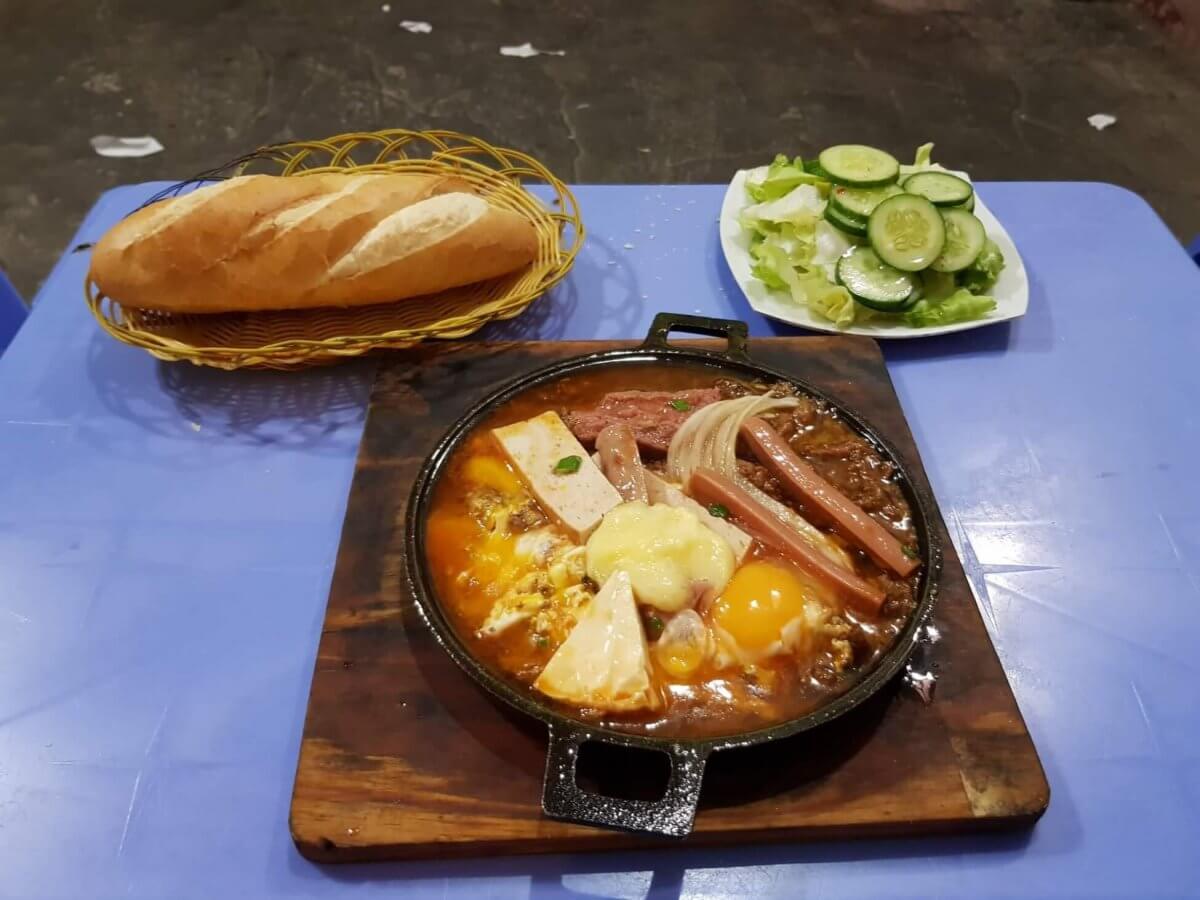 Indulging five times a day without guilt and not feeling guilty is something that wouldn’t work with Western food. Here, there is no plan to go to a restaurant, you simply let yourself be engulfed by streets with endless variations of soups, fish, seafood, meats, fresh herbs, vegetables, all sprinkled with lime and dipped in sweet and sour chili sauce…yumyum! The orgasmic combination of salty, sweet, sour, hot, and spicy elevates a simple meal for 1 euro from a dirty street to a royal pedestal that you simply must shove into your mouth even though you had lunch half an hour ago.
Indulging five times a day without guilt and not feeling guilty is something that wouldn’t work with Western food. Here, there is no plan to go to a restaurant, you simply let yourself be engulfed by streets with endless variations of soups, fish, seafood, meats, fresh herbs, vegetables, all sprinkled with lime and dipped in sweet and sour chili sauce…yumyum! The orgasmic combination of salty, sweet, sour, hot, and spicy elevates a simple meal for 1 euro from a dirty street to a royal pedestal that you simply must shove into your mouth even though you had lunch half an hour ago.
The greatest adventure in Vietnamese cuisine is that the same dishes vary not only by city but even by specific street where they are prepared. This makes culinary discovery a real experience, and one does not mind indulging in Bánh Xeo pancakes fifty times. Then there are specialties like Bánh Khọt, for which you have to travel to specific corners of the city where they have historical ties and are not made anywhere else.
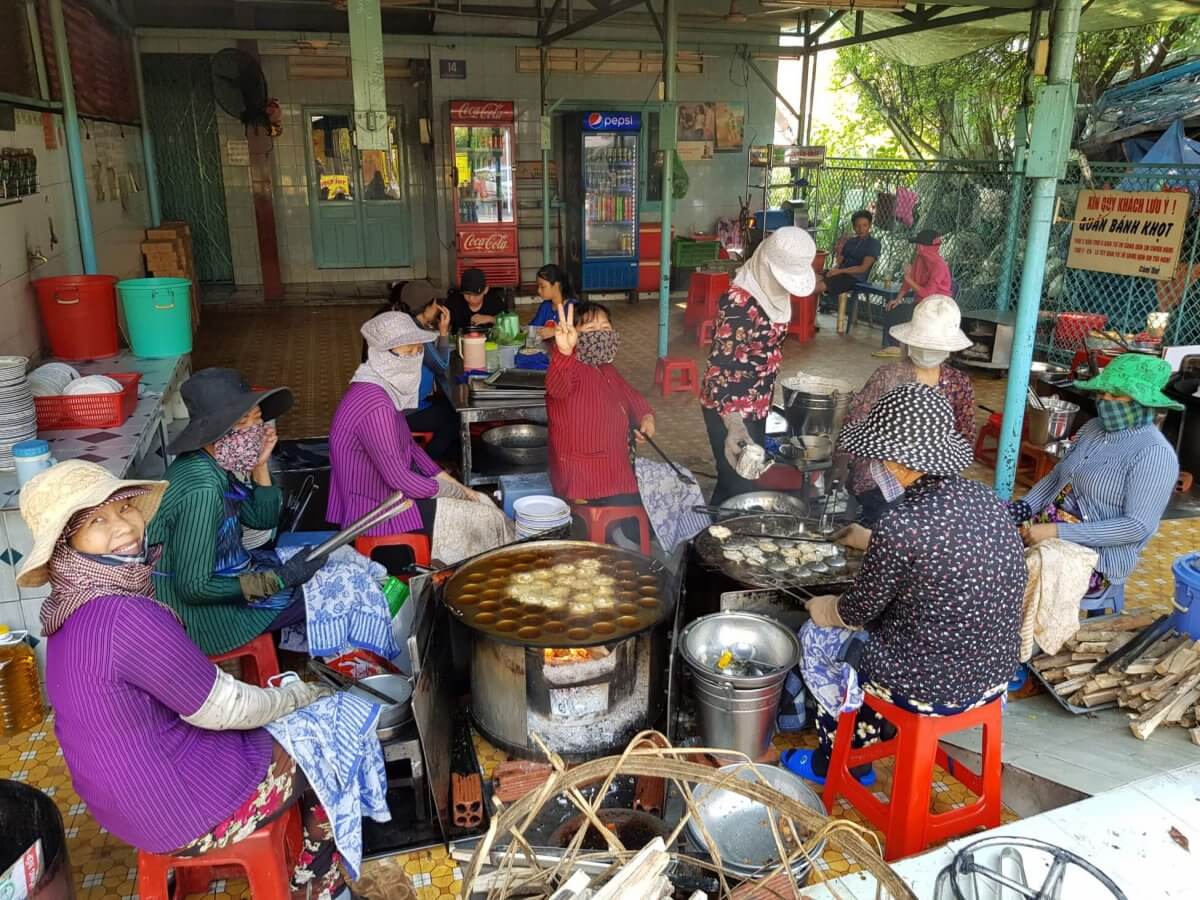
Bánh Mì: is a chapter on its own, ubiquitous food cart “Xe đẩy bán hàng” with meat, vegetables, eggs, pâté, sauces, and the aunt who with a smile stuffs all of this into a crispy baguette for less than 1 euro. There is always time for a Bánh Mì, it is one of the few things in Vietnam that remained from French Indochina. Besides it, the French brought basic ingredients like potatoes, carrots, asparagus, but also delicious milk desserts.
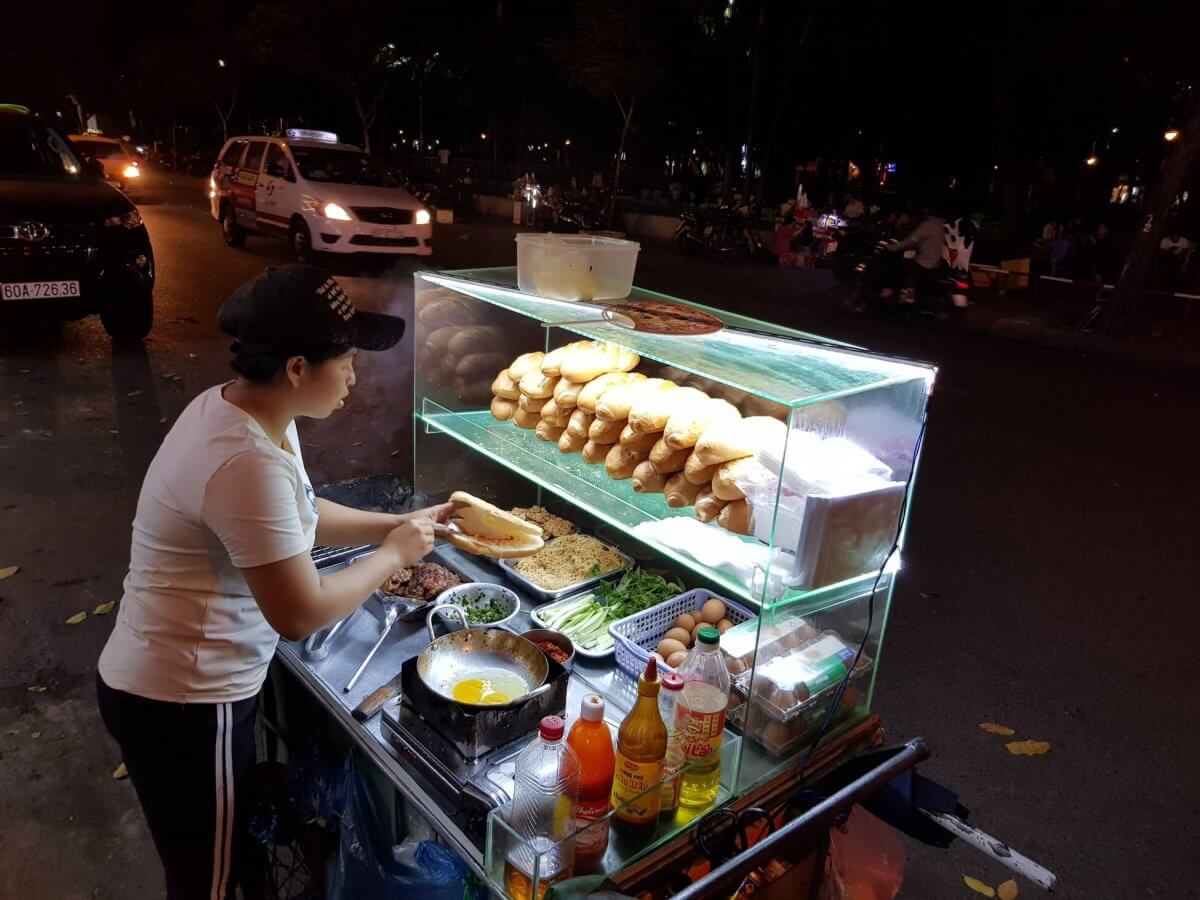
Coffee: The coffee culture in the country is extraordinary, you stumble anywhere on the street and end up in a café. Vietnam is the second largest exporter of coffee after Brazil, but if you are accustomed to the acidic Ethiopian light roast, Vietnamese coffee will blow your mind. It is traditionally prepared through a metal filter “phin,” through which the coffee slowly drips into condensed milk, then it is mixed, and the high bitterness of robusta dissolves in a sweet addiction. Another specialty is egg coffee with whipped egg whites, it’s good to treat yourself in a room with a toilet. I recommend learning to ask for “Cà phê sữa nóng” if you want hot coffee and “cà phê sữa đá” with ice, because too often you might get the exact opposite of what you ask for.
TIP: In the city of Đà Lạt, there is a civet farm where it is worth buying this high-quality coffee, but I do not recommend buying it from supermarkets.
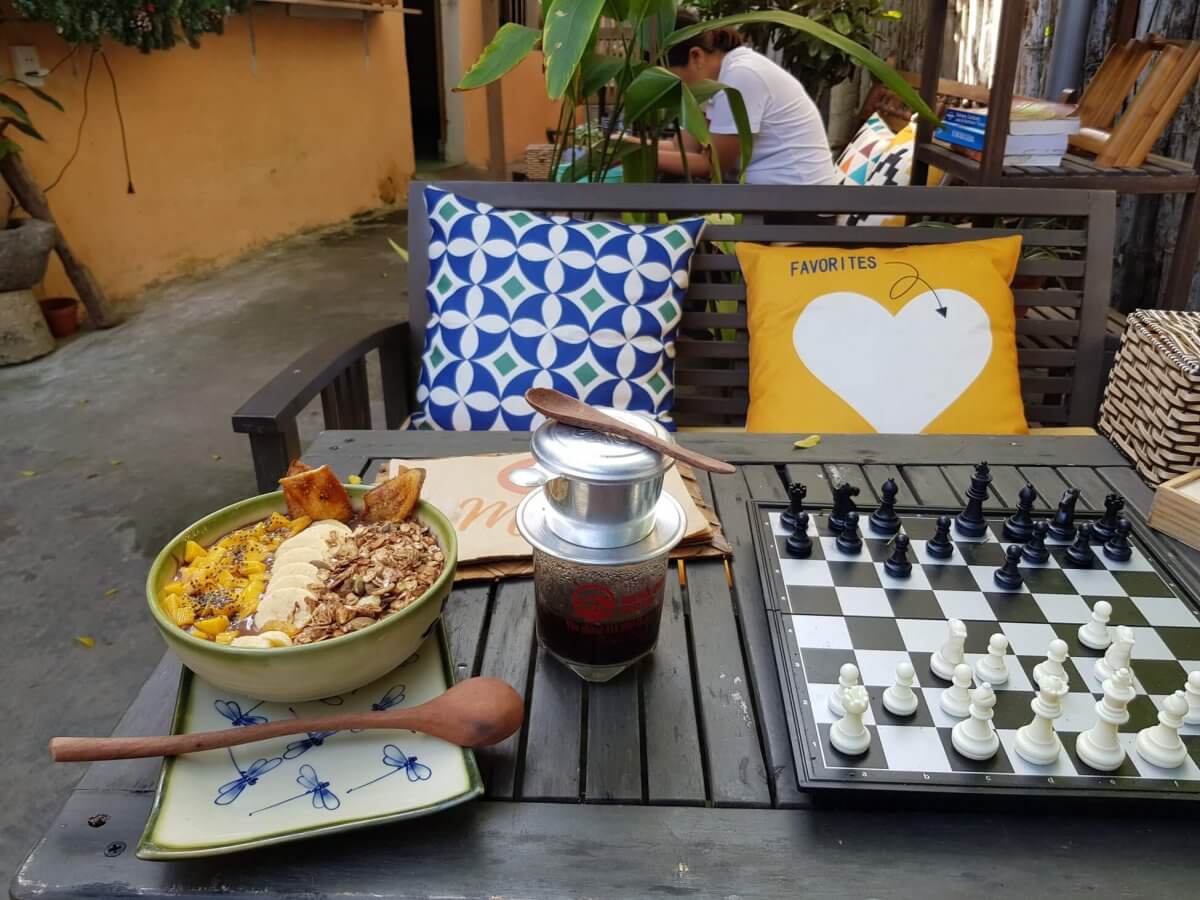
Fruit: Fresh tropical fruit from markets is an experience on another level, and smiling aunts also juice it right in front of you on any street, half a liter for less than 1 euro! Fruit is commonly added to savory dishes, very often there is momordica, an all-year-round melon that dyes rice dishes slightly red.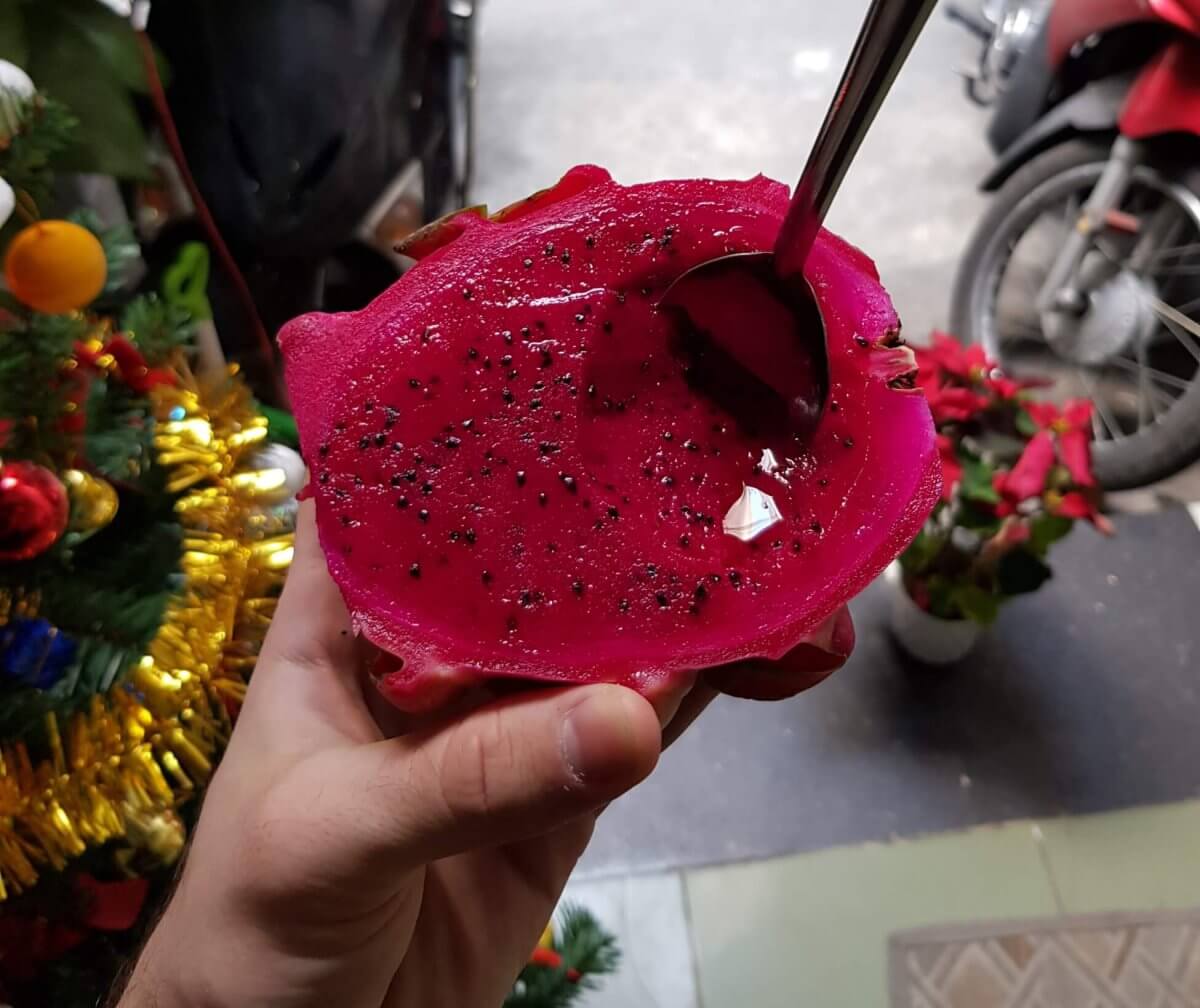
Places you definitely need to visit
1. Desert in Vietnam Bàu Trắng – Red and white sand dunes in Southeast Asia are such a cool sight that you just can’t help but zip over to them on a scooter and feast your eyes on them. They spread about 40 km from the fishing village of MuiAnd in the middle of the “Vietnamese jungle,” they appear magical.
2. Cham Towers – The city of spirits Nha Trang harbors the Hindu temple complex of Po Nagar Tower, a remnant of the Champa kingdom. The tallest tower is dedicated to the goddess Po Nagar, the protectress of the Champa kingdom. During the day, you may come across young Hindu girls performing traditional Cham dances in synchrony. Admission is by donation.
3. Linh Ung Pagoda – It’s easy to overlook on the map, but up close, you’ll be grounded by the 67-meter Lady Buddha statue (the female version of Bodhisattva – representing Gautama Buddha before attaining Nirvana), connecting heaven and earth. The pagoda itself is exceptional, blending modern style with traditional Buddhist themes; the roof is curved and lined with dragons. The corridor on both sides of the path to the main chamber is guarded by statues of 18 Arhats, each depicting emotions of different human beings – joyful, angry, happy, and sad. A great cycling path leads to the pagoda.
4. Buddha’s Hands – The Golden Bridge in Ba Na Hills is a construction unlike any other in the world. It feels like something out of a fantasy world, enhanced by the beautiful natural scenery surrounding it. The Buddha’s hands supporting the bridge seem to symbolize the offering from earth to sky. The cable car takes you through two “French” villages full of Gothic cathedrals and beautiful architecture built in the mountains, something between Paris and Disneyland. It’s a full-day experience, but it requires a good amount of patience as the attraction does not have a set limit on the number of tourists, so you might have to wait for anything at least half an hour. Entrance fee 700,000 VND (28 euros).
5. My Son Sanctuary – From the 4th century, the My Son Sanctuary was a significant cultural center of the Champa kingdom, leaving behind a cluster of Hindu ritual temples used for worshiping the god Shiva. Admission by donation.
6. Monkey Mountain – Venture on a scooter to the Thọ Quang peninsula in Da Nang, a small jungle encounter where only shy monkeys accompany you (a different species on each side of the peninsula) along with beautiful views. The main attraction is the 800-year-old Cây đa Sơn Trà banyan tree, definitely one of the most beautiful experiences ever, and also the Linh Ung Pagoda.7. Vung Tau – A lazy seaside town located 60 km from bustling Ho Chi Minh City is an attraction worth exploring on its own. It captivates with its genius loci, tranquility, no one suddenly honking, girls on the street not trying to massage you at any cost, and everyone seems somewhat happier. Vung Tau is a holiday destination for the Vietnamese, a few busy streets are half-empty, and most people just laze around by the slightly rugged waves of the South China Sea. Someone once used the term “manufactured Vietnam” in an article, and in this town, I understood what it meant. The streets are filled with humble street food like everywhere else, but the view is dominated by skyscrapers like those in Dubai and luxurious hotels along the entire coastline. The reason for the contrast lies in the oil reserves, from which the big shots built an entirely new face of Vietnam in just a few years. However, they also invested the same money in artistic architecture, and it’s definitely worth coming here to see it.
8. Trúc Lâm Phụng Hoàng Zen Monastery – Located on a 24-hectare plateau near the city of Da Lat, this impressive Buddhist monastery was meant to restore the spirit of Zen Buddhism. Surrounded by pine trees and bonsai trees, it creates a perfect atmosphere for peaceful contemplation.
9. Thích Ca Phật Đài Buddhist Temple – A glimpse into the world of Theravada Buddhism, this temple is immersed in a harmonious combination of flowers, trees, and architectural structure. Meditation in the paradise garden is enhanced by the ubiquitous chirping of birds and the penetrating scent of candles.
10. Mui Né– The traditional fishing village is a lazy stopover across Southern Vietnam. It captivates with views of endless rows of small boats and larger fishing vessels in the harbor. The fish market opens at six in the morning; until then, you can jog along the coast and watch as the fiery sphere floods the beautiful scenery.
Cool Travel Ideas
Cooking class – A perfect way to immerse yourself in real authentic Vietnamese cuisine. Each city offers something different; we experienced a boat trip to the coconut forest near Saigon, where we learned about specific herbs with the locals, how and where to use them, cooked 5 dishes, and then enjoyed them all.
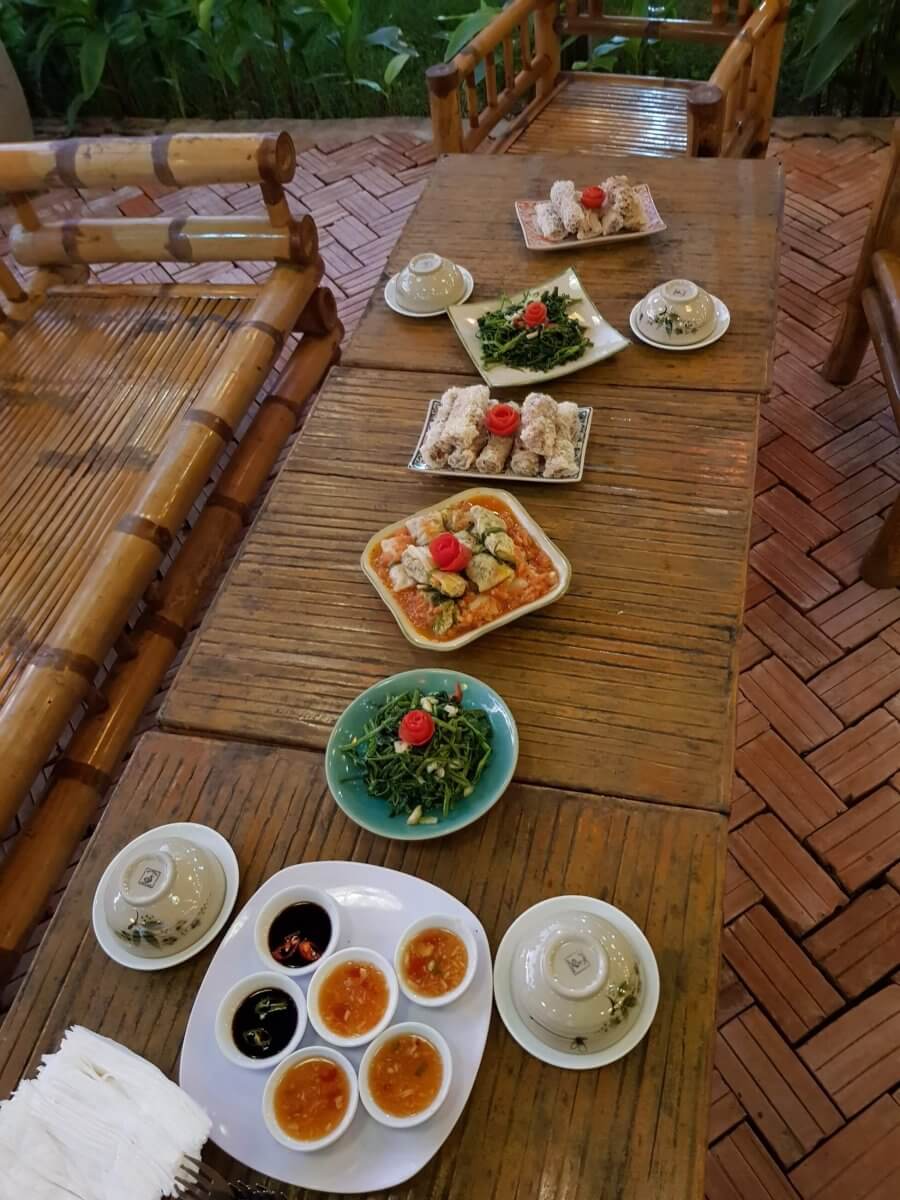
TIP: The activity program varies depending on the time of day; for example, if you go in the morning, you will most likely be taken to the market to explore all the ingredients. In the afternoon, the class is combined with other interesting activities and exploring the surroundings.
Mekong River Cruise – A full-day super activity. Boating on the magnificent mighty river combined with an excursion into a real oasis and coconut candy making. The locals even sing their traditional songs recorded in UNESCO, even though it really hurts your ears.
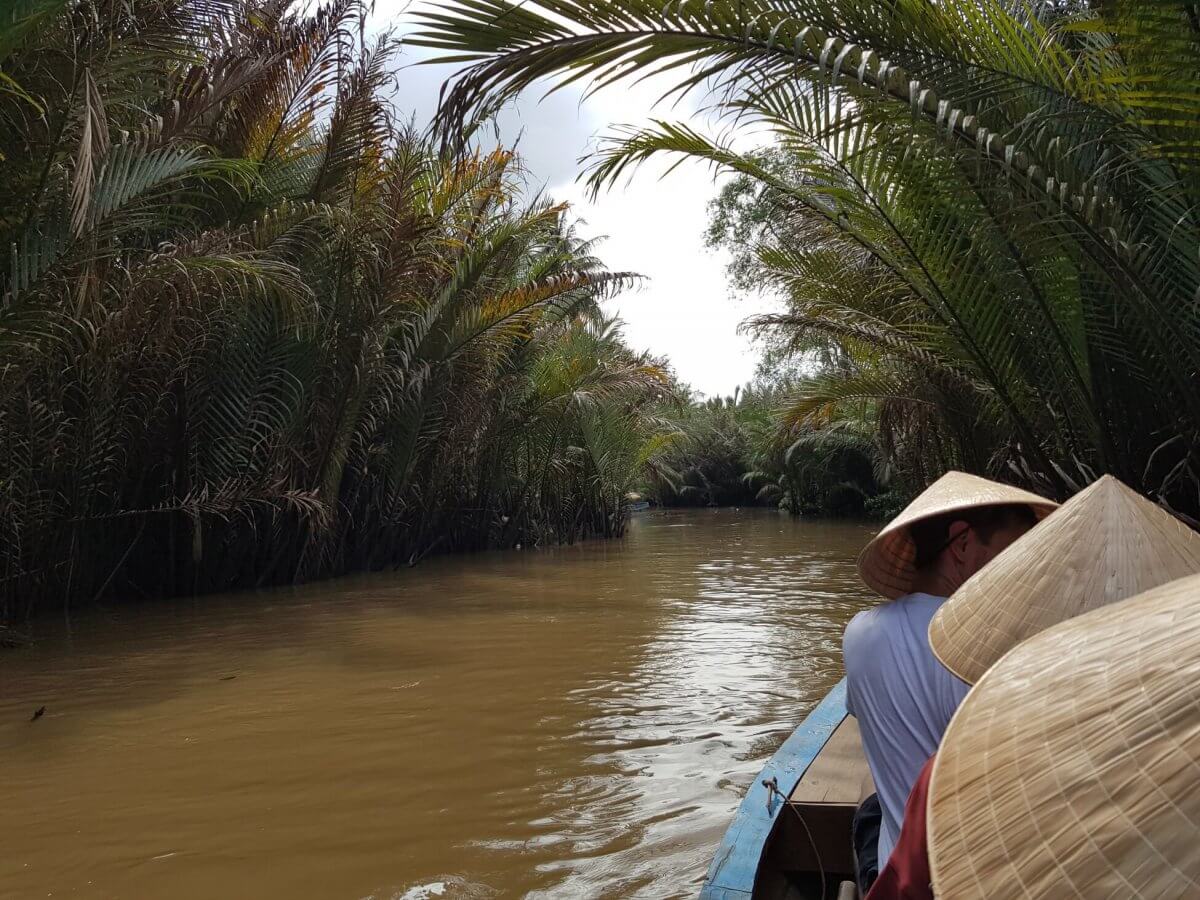
Always On A Scooter – Endless freedom and liberty, all at a cheap cost. Scooter for the day $4; gas $2. Without documents and papers, you can ride around all day, exploring Buddhist temples or tucked-away villages.TIP: If you are stopped by the police, have only a small amount of money in your wallet, I recommend a maximum of 200,000 dong (around 8 euros) and insist to the police officer in Slovak that you have no more. Once you start speaking in English, they will squeeze every last dong out of you like a toothpaste tube. Locals even recommend not stopping at all; if a police officer waves a stick at you, you can calmly try to continue. The reason for the fine is the absence of an internationally valid driver’s license, but even if you happen to have it, they will ask for some special Vietnamese document or something that entitles you to… blah blah blah, just nonsense, you will always end up paying.
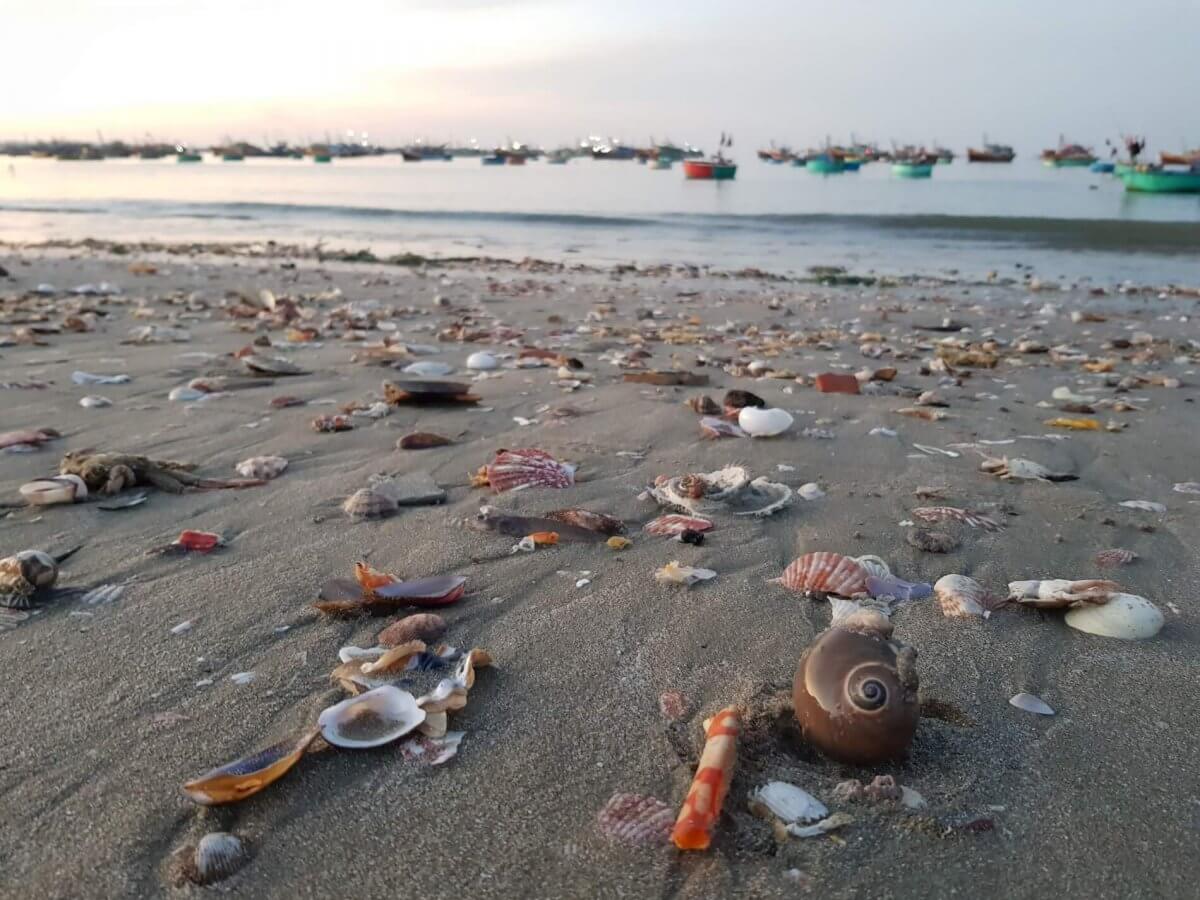
TIP: Wear a face mask not only to prevent sunburn but mainly so that the police officers do not see the color of your skin, because “rich whites” could be seen as a potential source of income. However, they do not stop frequently, rather exceptionally (not at all in cities). Regarding the skin color: in Vietnam, there is a so-called white skin cult, which especially women are obsessed with. The streets are full of them, covered “ninja style” from head to toe even in tropical heat, protecting themselves from the sun, buying creams and cosmetics with a “whitening” effect in stores. White skin is associated with wealth and beauty; only blue blood could sit at home in the shade, while all subjects had to toil in the rice fields.
Things to consider before traveling to Vietnam
As if the Vietnamese didn’t have enough, a huge problem for them is the English language. Students cram from a young age, but under the supervision of Vietnamese teachers, their hard work hits a wall – pronunciation. Vietnamese tend to swallow the first half of the word. The situation is serious because they are one of the fastest developing countries in the world; the economy thrives on tourism, and the young generation rarely speaks a foreign language at a communicative level. Mostly it’s just “Hello, how are you?” with perfect pronunciation, and that’s about it. So, it is necessary to arm yourself with a good dose of patience and Google Translate, which they always have at hand.
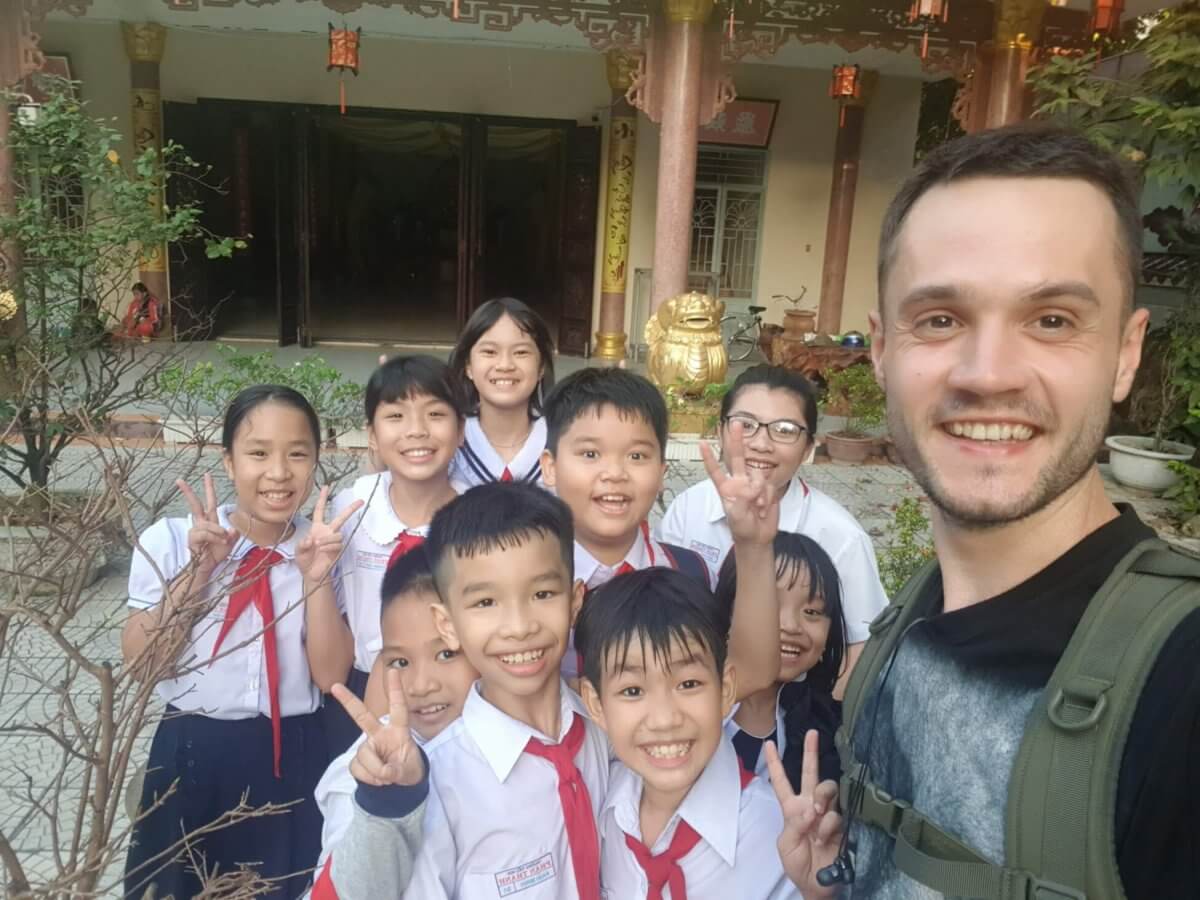
Do not have any expectations “Vietnam has engulfed me, is crunching, chewing, and I am enjoying it to the core,” I wrote a note when we set off at two in the morning in the village of Mũi Né with a local fisherman Sue to the sea. Just relax and soak in all the beauty to the fullest.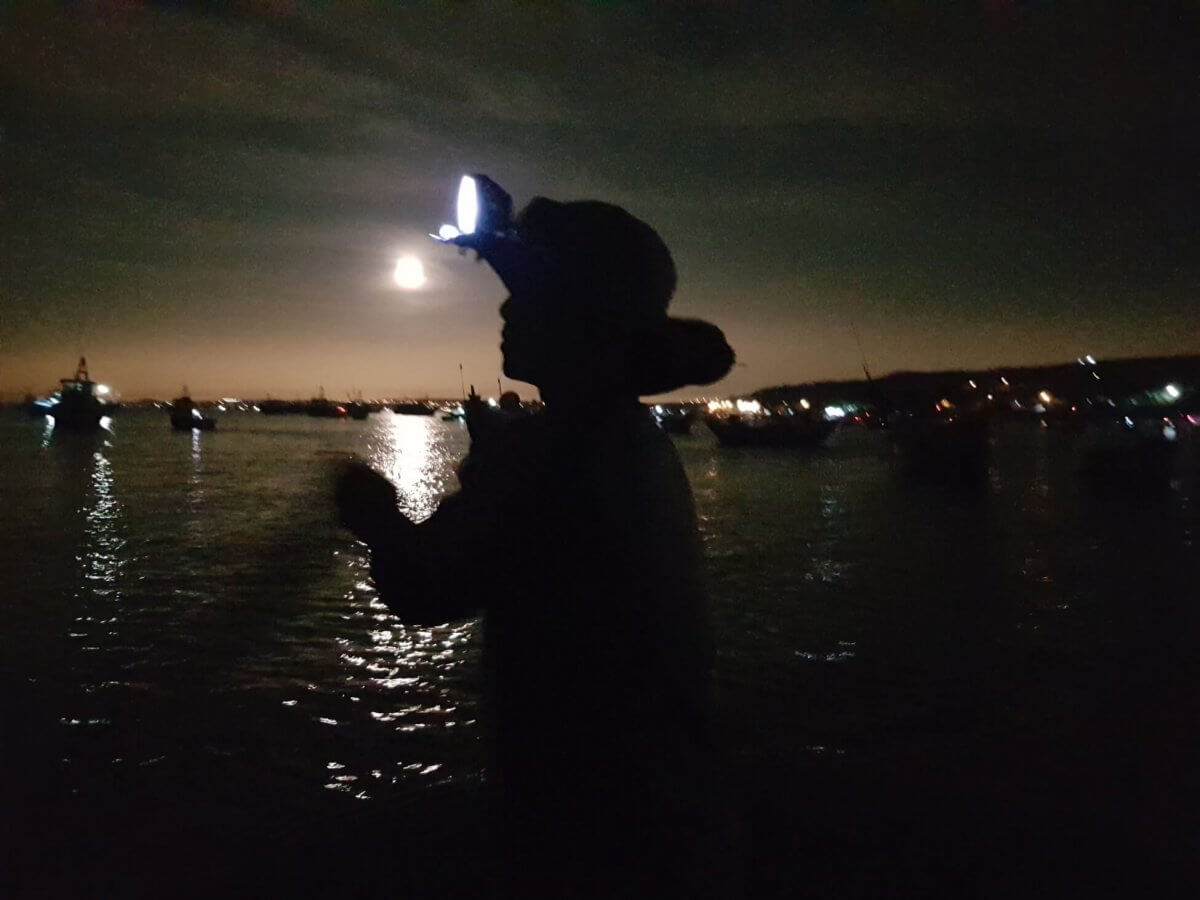
Vietnamese people are incredibly kind, their smiling eyes and willingness to help a European in any situation can be quite surprising. Despite the huge gap between the poor and the wealthy, the people of this communist, or rather dictatorial regime seem quite happy. For comparison, the average salary in larger cities is 200 dollars and in remote areas inland, even more pronounced poverty prevails, so life overall is really complex here.
It’s good not to stress out all Vietnamese people with English and learn at least some basic phrases in their language. You will bring a smile to their faces and they will immediately want to be friends.
Thank you – Cám on [kám ern]
Hello – Xin chao [sin jów]
Goodbye – Tam biet [dum bee-et]
How much is this? – Cái nay giá bao nhieu? [kái nay zá bownyoo]
Yes – Vang / Da [vang / ya]
No – Khong [kom]
Where can I find…? – Ó dau…? [ér dow]
Forget all “beware of scam” videos
Half of the google/youtube results about traveling to Vietnam focus on so-called “scamming”, various ways in which locals try to extract money from unsuspecting tourists. Yes, it is true that in million-strong cities there are scammers like unlicensed taxi drivers (who overcharge unnecessarily) or shoe shiners who steal your shoe, and if you don’t pay them for the repair, you won’t get it back. These are real incidents you have to face if you are a novice tourist ignoramus. And yet, all it takes is a few simple rules:
- Wallet and mobile always in the front pockets
- Do not respond to calls, offers, suggestions (but be open and endlessly smiley, because that’s how Vietnamese people are)
- Use only apps for taxis. They show the exact fare, distance, and the nearest driver. In Vietnam, Grab is popular and cheap, for a euro it will take you on a motorbike across the whole city.
Documents, Vaccinations, and Visa Business
Dealing with visas for Vietnam is a terrible business online. Prices on different websites vary by tens of euros, they even offer various discount coupons, and yet each of them sends you a scratchy one-page PDF via email. If you want to get into the country, you can choose a tourist Visa on arrival or electronic visas. I recommend Visa on arrival as the most suitable option in case you need to get into the country quickly and without unnecessary stress. Just apply online for the Letter of Approval (another PDF with a big red star), bring a few other small things (all info can be found on this visa website –https://www.myvietnamvisa.com/vietnam-visa-on-arrival.html, it proved to be the cheapest and functional for me) and at the airport in Vietnam, a fun aunt behind the counter will hand you the visa in a very entertaining way.
Vaccination – typhoid, hepatitis a, b, meningitis. Always ask a doctor what viruses and epidemics are currently happening in a given area, they have the most up-to-date info. I paid 150 euros in a vaccination institute in BA in a rush, but it’s best to deal with it at least a month in advance through a general practitioner.
